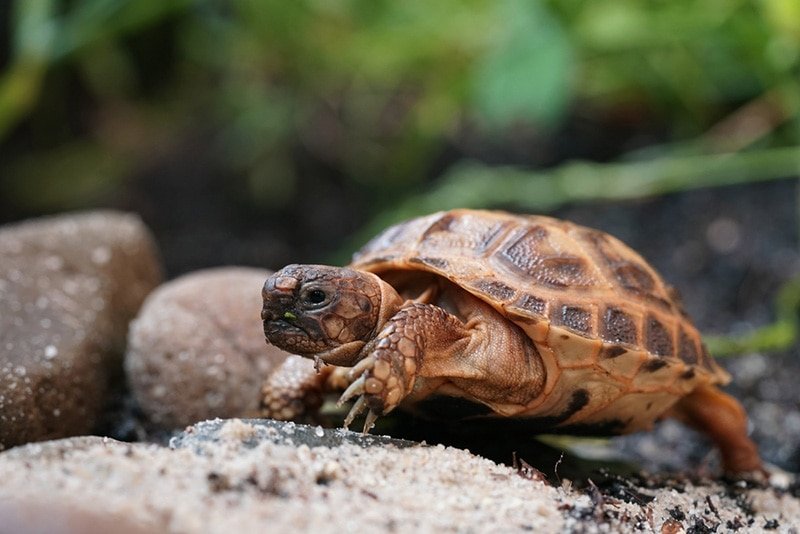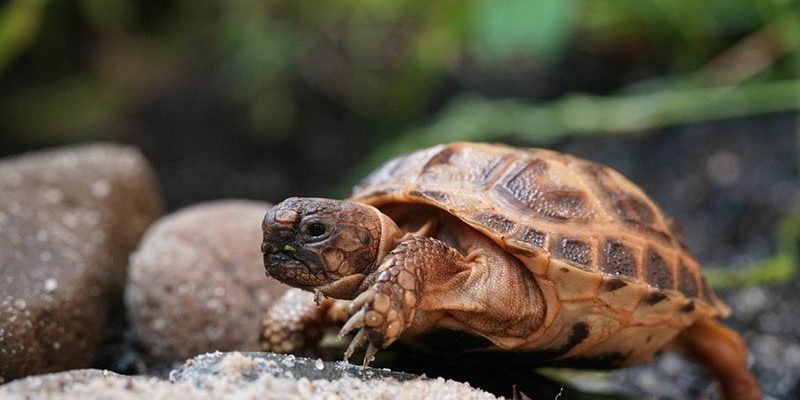
These tortoises, scientifically known as *Testudo horsfieldii*, bring a lot to the table in terms of personality and care needs. As you sip your coffee, let’s dive into their lifespan and growth rate, exploring what makes these little guys so special. Understanding their life cycle can help you provide the best possible care for your shelled friend, ensuring they thrive in your home.
Understanding Lifespan
The lifespan of a Russian tortoise can genuinely surprise you. In the wild, they often live between 40 to 50 years, but in captivity, with proper care, they can live even longer—sometimes up to 70 years! This is like having a pet that could outlive your childhood dog!
So, what contributes to their impressive longevity? Well, it’s a combination of factors such as diet, habitat, and health management. A well-balanced diet rich in leafy greens, a safe and spacious habitat, and regular vet check-ups can make all the difference. Honestly, if you commit to giving them a good life, you can expect to enjoy their company for many decades.
You might be wondering why some tortoises seem to live longer than others. Genetics plays a role here, too. Just like us, some tortoises are naturally hardier. However, lifestyle choices make a huge impact on their overall health. So, if you’re considering a Russian tortoise, think of it as a long-term commitment—it’s a relationship that requires love and attention for many years!
Growth Rate: What to Expect
When you first get a Russian tortoise, one of the most exciting aspects is watching them grow. On average, a hatchling will be about 2 inches long. But here’s the fun part: they can grow quite rapidly in their early years. In fact, during their first year, you might see them grow up to 4 inches!
The growth rate generally slows down as they mature. By the time they reach adulthood, usually around 5 to 7 years, they’ll measure between 6 to 10 inches. After reaching adulthood, their size will stabilize. It’s fascinating to think that the little creature you brought home could eventually become a hefty tortoise!
Providing the right environment during this growth phase is crucial. Ensure they have plenty of space to roam. A large enclosure or a secure outdoor habitat can promote healthy growth. With proper care, you’ll witness this remarkable transformation, and honestly, it’s one of the most rewarding parts of being a tortoise owner.
Diet and Its Impact on Growth
You might be surprised to learn that a Russian tortoise’s diet can significantly influence their growth rate and overall health. These little guys are herbivores, so you’ll want to focus on leafy greens like dandelion greens, collard greens, and kale. It’s like feeding them a salad every day—who knew tortoises had such refined tastes!
Avoid high-protein foods, as these can encourage rapid growth that may lead to health problems later on. Instead, make sure they have a varied diet rich in fiber. This helps maintain a healthy digestive system and promotes steady growth.
Here’s a quick rundown of some great foods to include in their diet:
- Dandelion Greens
- Endive
- Mustard Greens
- Timothy Hay
- Occasional treats of fruits like strawberries or melon
Honestly, a little planning goes a long way. By giving your Russian tortoise the right foods, you create a foundation for a long, healthy life. Plus, it makes you feel like a responsible pet owner when you see them thriving!
Habitat and Its Role in Lifespan
Creating an ideal habitat for your Russian tortoise is crucial for its longevity. Think of their enclosure as a mini sanctuary that mirrors their natural environment. A well-designed habitat includes proper lighting, temperature control, and hiding places.
Russian tortoises thrive in temperatures between 70°F to 90°F during the day, and they need a cooler area for nighttime rest. It’s essential to provide a basking spot where they can soak up UVB rays. This helps them absorb calcium, which is vital for their shell health and growth.
You might be wondering how much space they really need. Ideally, an enclosure should be at least 4 feet long. If you can provide an outdoor area, that’s even better! Just make sure it’s secure from predators and provides spots for shade and sun. There’s nothing like watching a tortoise roam freely; it’s like seeing them experience life in a whole new way!
Health Considerations for a Long Life
Just like us, Russian tortoises can face health issues that may affect their lifespan. Regular veterinary check-ups are essential to spot any potential problems early. Look out for signs of illness, including lethargy, not eating, or abnormal shell growth.
Maintaining a clean environment is also key. Tortoises can be prone to respiratory infections if exposed to damp, dirty conditions. So, make it a habit to clean their enclosure regularly.
Another aspect of health care is hydration. Tortoises need access to fresh water every day. Sometimes they might even enjoy a soak in warm water for hydration and shell care. It’s a simple step that can make a considerable difference in their health.
When you provide attentive care and monitor their health closely, you set your Russian tortoise up for a long and vibrant life.
Investing time and energy into understanding the lifespan and growth rate of a Russian tortoise can truly deepen your bond with this unique pet. They might be small and slow, but they have a rich, fulfilling life ahead, especially with your care.
From their healthy diet to their spacious habitat and regular vet visits, every choice you make contributes to their happiness and longevity. These tortoises aren’t just pets—they’re companions that can add joy and warmth to your home for decades. So, if you’re ready for this adventure, get excited! A little dedication goes a long way in nurturing this marvelous creature.

